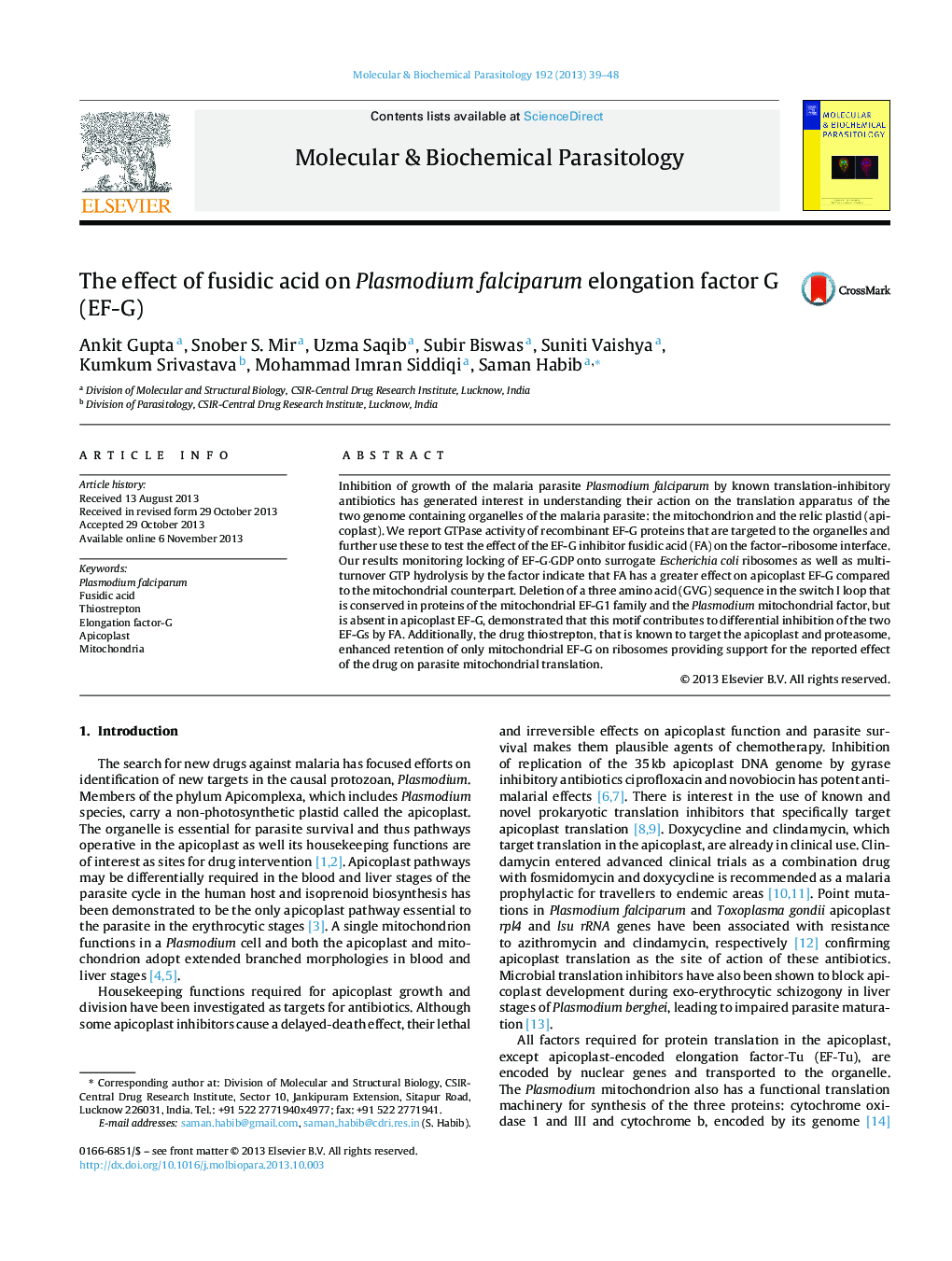| Article ID | Journal | Published Year | Pages | File Type |
|---|---|---|---|---|
| 2829766 | Molecular and Biochemical Parasitology | 2013 | 10 Pages |
•Biochemical characterization of P. falciparum mitochondrial and apicoplast EF-Gs.•Organellar EF-Gs have differential sensitivity to the antibiotic fusidic acid (FA).•A GVG motif in the switch I region of mitochondrial EF-G reduces sensitivity to FA.•Thiostrepton promotes locking of mitochondrial EF-G·GDP to 70S ribosome.
Inhibition of growth of the malaria parasite Plasmodium falciparum by known translation-inhibitory antibiotics has generated interest in understanding their action on the translation apparatus of the two genome containing organelles of the malaria parasite: the mitochondrion and the relic plastid (apicoplast). We report GTPase activity of recombinant EF-G proteins that are targeted to the organelles and further use these to test the effect of the EF-G inhibitor fusidic acid (FA) on the factor–ribosome interface. Our results monitoring locking of EF-G·GDP onto surrogate Escherichia coli ribosomes as well as multi-turnover GTP hydrolysis by the factor indicate that FA has a greater effect on apicoplast EF-G compared to the mitochondrial counterpart. Deletion of a three amino acid (GVG) sequence in the switch I loop that is conserved in proteins of the mitochondrial EF-G1 family and the Plasmodium mitochondrial factor, but is absent in apicoplast EF-G, demonstrated that this motif contributes to differential inhibition of the two EF-Gs by FA. Additionally, the drug thiostrepton, that is known to target the apicoplast and proteasome, enhanced retention of only mitochondrial EF-G on ribosomes providing support for the reported effect of the drug on parasite mitochondrial translation.
Graphical abstractFusidic acid has a more pronounced effect on apicoplast EF-G compared to the mitochondrial factor partly attributable to a GVG sequence in the latter's switch I.Figure optionsDownload full-size imageDownload high-quality image (113 K)Download as PowerPoint slide
